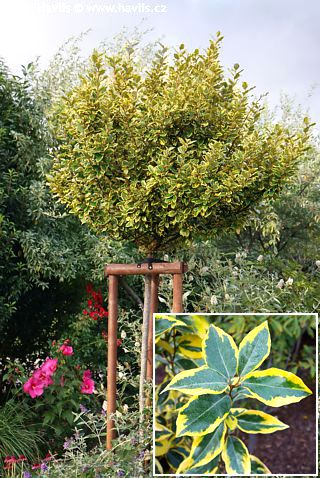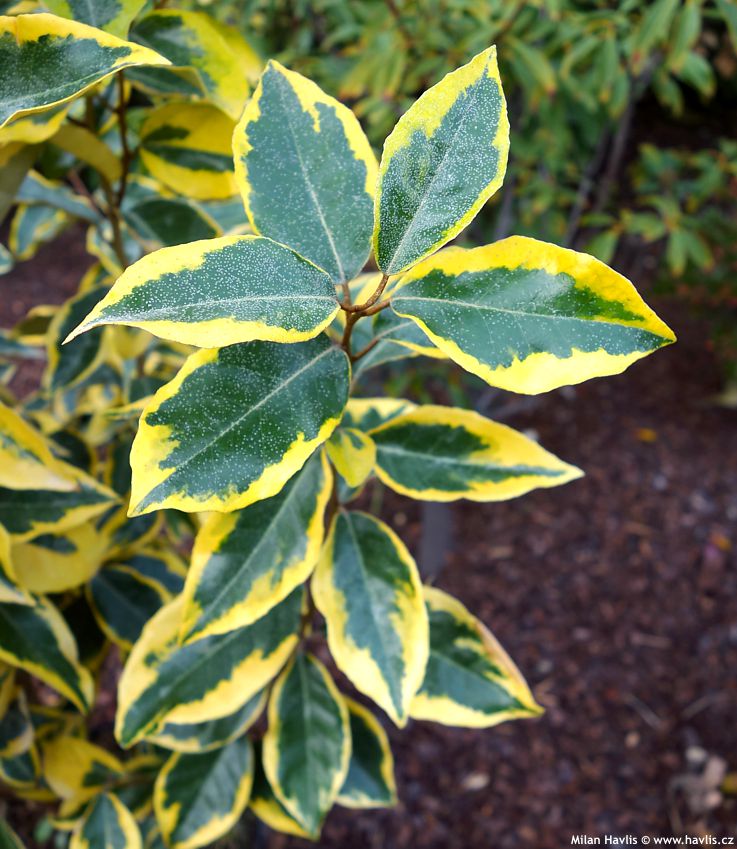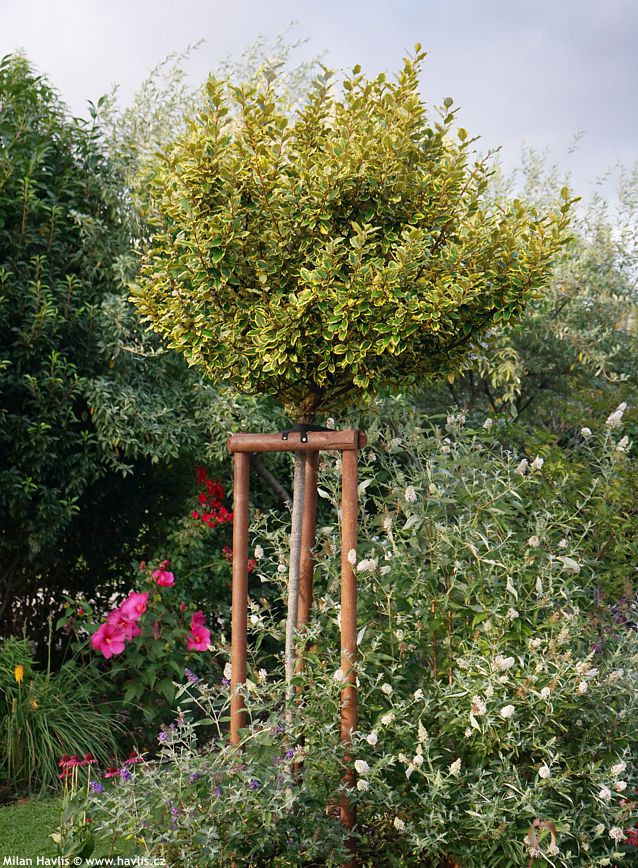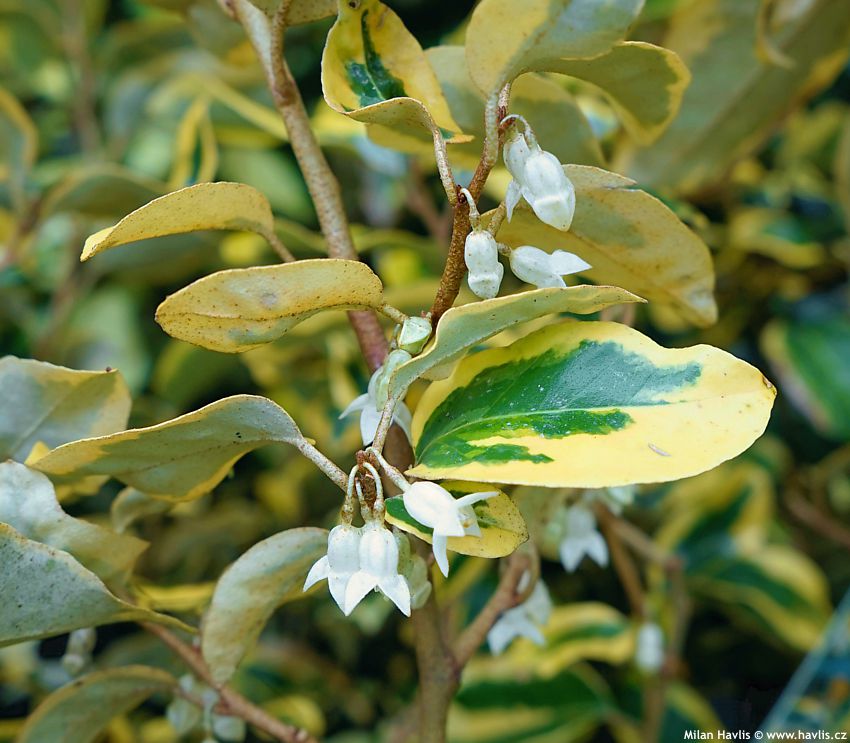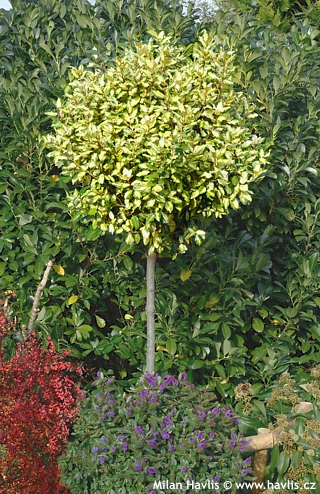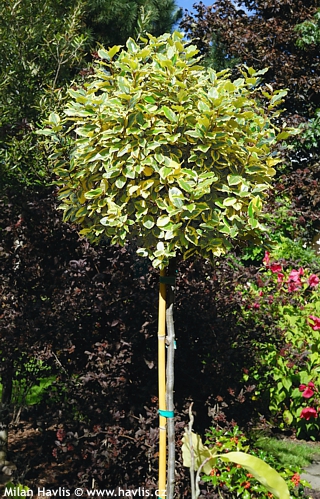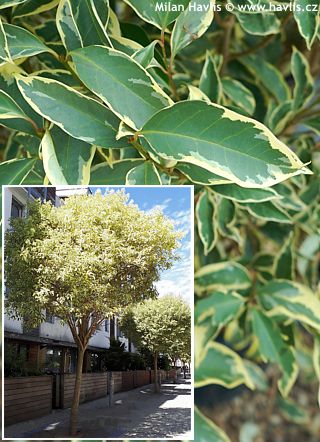Elaeagnus x ebbingei 'GILT EDGE' evergreen silverthorn - STANDARD TREE
size/type
small tree,small tree
usual height
2-5m
usual width
1-3m
leaves
evergreen broadleaf
colour of leaves
flowers
less showy but noticeable
colour of flowers
blooming time
September-October
location
full to partial sun
soil type
any (acidic to alkaline)
soil moisture requirements
evenly moist but well-drained
USDA zone (lowest)
7 (down to -23°C)
winter protection
for zone 5+6

for zone 7

categorized
Elaeagnus
Evergreen silverthorn is a natural hybrid of e. macrophylla with large, evergreen, rather rounded leaves and vigorously growing e. pungens with narrower foliage and thorns. It is sometimes called Russian olive which is not correct as this name is already used for its deciduous sister e. angustifolia. It is described to have been discovered by a Dutch horticulturist Simon Doorenbos (1891-1980) who named it after another Dutch botanist J.W.E. Ebbinge in 1929. However, many years later it was pointed out that a Swiss botanist Camille Servettaz (1870-1947) found this mutation, too, and named it elaeagnus x submacrophylla already in 1909. In spite of that, the whole horticultural world still sticks to e. x ebbingei and we do, too, if you don’t mind.Description of the plant:
Gilt Edge is one of the first registered varieties of evergreen silverthorn with variegated foliage. It makes leathery, oval to ovate, partially undulated, and glossy leaves with dark green centres and thick yellow margins. Twigs are orange-brown, and the colder the weather comes in autumn the deeper the colour gets. It grows fast into a small tree with somewhat irregular habit. It can make up to one meter long twigs per year but can be controlled by pruning.Apart from its attractive foliage evergreen silverthorn is also interesting for its almost invisible but very fragrant flowers. They are tiny and appear from late summer to early autumn. Their sweet perfume is distributed especially on sunny and warm afternoons and evenings. Pollinated flowers are followed by edible fruit in spring. About 1,5cm long, oval fruit is deep red and taste like sweeter dark cherries. It is best to ripen well which is when it begins to fall down. The plant can hold the fruit only after mild winters.
Evergreen silverthorn is often demanded as a standard tree which offers an instant and evergreen screening that blocks the unwanted views from neighbouring windows. It also serves as a handsome, small, specimen, evergreen tree if regularly trimmed. Pruning and shaping can be done it in almost any manner from early spring until late summer. Variegated silverthorns are prone to reversed foliage – some newly emerging twigs exhibit solely green leaves, those must be removed as soon as spotted, otherwise they might replace those with coloured leaves in a few years.
It is soil adaptable but needs mulching in our climate to protect surface roots from deep frost. In colder regions we suggest planting it in winter shade. Even after severe frosts it re-sprouts from healthy wood and makes long new branches. It will not live in boggy and wet conditions. Hardy to min. -23°C (USDA zone 6) and possibly a few degrees lower with some leaf damage. In frost-free periods provide extra watering on days when the ground is not frozen. Standard trees need good support for at least 3 years from transplanting, just remove the bamboo stick which is commonly attached to the tree when sold.
Last update 01-02-2023
QUICK PRICE OVERVIEW
CURRENTLY SOLD OUT
WANT TO TRY A SIMILAR PLANT?












